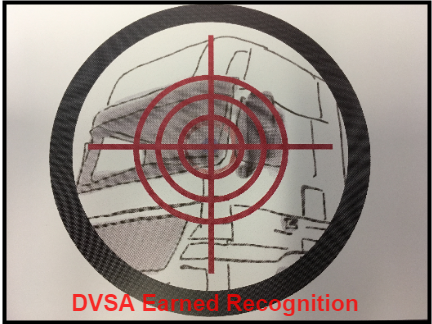Since April, rumours about the OCRS have abounded.
Many operators have questioned the validity of the scoring system in the culture of Earned Recognition; others have suggested the OCRS will be made void upon the implementation of the new enforcement scheme.
These, however, are misconceptions. The bottom line is: there are no plans to annul or amend the Operator Licence Risk Scoring system. At least, none that have been made public.
How does the OCRS work?
To determine which commercial vehicles should be inspected, the OCRS system is used. The higher an operator's score, the higher their chance of being inspected.
As an operator, your data is collected by the DVSA over a 3-year rolling period. That data is accrued mainly through annual tests and roadside inspections. Then they score you on two separate categories:
- Roadworthiness (condition of the vehicle)
- Traffic (weighing checks, drivers' hours, etc.)
Which are then combined to generate your total.
During inspection, the agent will give you points on any area in which they've found an infringement or defect. Each score will be marked as one of the following:
- R (red, highest risk)
- A (amber, medium risk)
- G (green, lowest risk)
What's my OCRS?
Only you have access to your score. Unlike the process for o-licence checking, there is no web page or database you can use to look up the information. So, the question 'What's my OCRS?' can only be answered by the operator asking it.
Instead, the process is very much like the one HGV drivers use to check their CPC hours. The task's fairly straightforward - which is in itself a small blessing; easy to use software is a rare commodity in this industry. If you want to see your current OCRS total, you must register in the online governmental portal. You can do so via:
https://www.gov.uk/manage-commercial-vehicle-compliance-online
Ensure you have your operator license number with you before you start. Within 5 working days of your registration, the DVSA will provide you with all the information you need on using the online system. Then you will be able to login and look up your OCRS details.
It's important to note, however, that your score can change over time. If you have committed a new offence, for example, your score may increase. It may decrease if you have a ‘clear inspection’ (an inspection passed without any issues).
The scores are marked against an operator’s license, so an operator with multiple licenses will have OCRS totals for each individual license.
If the DVSA doesn't have 3 years’ worth of data for you, you may have no score at all.
This is the kind of topic covered in CPD courses, such as OLAT. In fact, if your OCRS score's high enough to warrant DVSA investigations, you may be required to attend an OLAT course in order to maintain the conditions of your O Licence. What I tell my clients, however, is that it's best to stay ahead of the curve. You can find out more about OLAT here:




